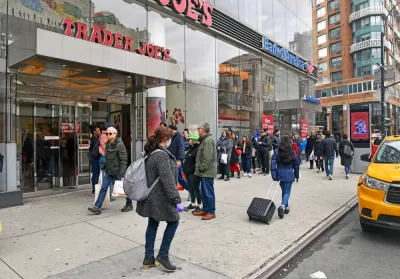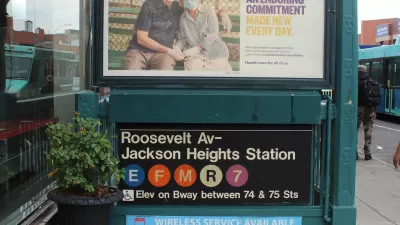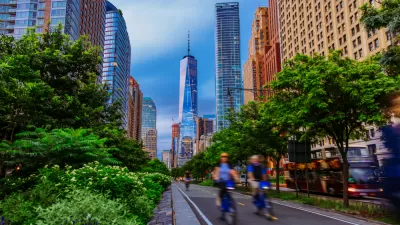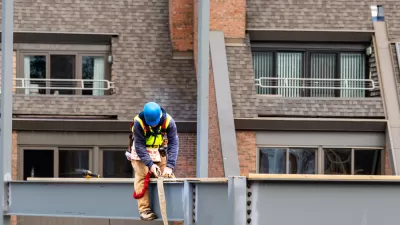Transit accessibility incentives are also included in a package of zoning reforms proposed this week that would provide incentives for grocery store developments in a wider swath of New York City.

Rebecca Baird-Remba reports on a bill proposed by New York City Mayor Bill de Blasio this week that would expand zoning incentives for grocery stores and transit station accessibility improvements, "allowing developers to get extra floor area in their buildings in exchange for including a supermarket or improving transit."
The grocery store incentives would expand the FRESH program, in place since 2009, to 11 new community districts, reports Baird-Remba.
"FRESH, which is an acronym for Food Retail Expansion to Support Health, allows developers to negotiate an additional 20,000 square feet of residential floor area in a new building in exchange for including a grocery store of at least 20,000 square feet," explains Baird-Remba.
The program has been controversial since its inception for a lack of progress in lower-income neighborhoods in the city.
"The Department of City Planning said that it plans to implement 'guidance' to prevent 'detrimental clustering of FRESH supermarkets' in gentrifying neighborhoods that have seen a significant amount of new residential development over the past decade," adds Baird-Remba. "The city also plans to waive up to 10,000 square feet of parking for a grocery store."
In addition to the grocery store improvements, Mayor de Blasio is also proposing a "Zoning for Accessibility" initiative that would allow developers additional floor area in exchange for funding accessibility improvements at the city's transit stations—a challenge that currently falls well below thresholds of accessibility established by state and federal accessibility laws.
FULL STORY: City Hall Expands Zoning Bonuses for Grocery Stores, Transit Improvements

Study: Maui’s Plan to Convert Vacation Rentals to Long-Term Housing Could Cause Nearly $1 Billion Economic Loss
The plan would reduce visitor accommodation by 25,% resulting in 1,900 jobs lost.

North Texas Transit Leaders Tout Benefits of TOD for Growing Region
At a summit focused on transit-oriented development, policymakers discussed how North Texas’ expanded light rail system can serve as a tool for economic growth.

Why Should We Subsidize Public Transportation?
Many public transit agencies face financial stress due to rising costs, declining fare revenue, and declining subsidies. Transit advocates must provide a strong business case for increasing public transit funding.

How to Make US Trains Faster
Changes to boarding platforms and a switch to electric trains could improve U.S. passenger rail service without the added cost of high-speed rail.

Columbia’s Revitalized ‘Loop’ Is a Hub for Local Entrepreneurs
A focus on small businesses is helping a commercial corridor in Columbia, Missouri thrive.

Invasive Insect Threatens Minnesota’s Ash Forests
The Emerald Ash Borer is a rapidly spreading invasive pest threatening Minnesota’s ash trees, and homeowners are encouraged to plant diverse replacement species, avoid moving ash firewood, and monitor for signs of infestation.
Urban Design for Planners 1: Software Tools
This six-course series explores essential urban design concepts using open source software and equips planners with the tools they need to participate fully in the urban design process.
Planning for Universal Design
Learn the tools for implementing Universal Design in planning regulations.
City of Santa Clarita
Ascent Environmental
Institute for Housing and Urban Development Studies (IHS)
City of Grandview
Harvard GSD Executive Education
Toledo-Lucas County Plan Commissions
Salt Lake City
NYU Wagner Graduate School of Public Service





























